Camera shootout: Galaxy S21 Ultra vs. Oppo Find X3 Pro go head-to-head


With innovations such as a microscope camera or a pair of telephoto lenses built into the smartphone's rear section, the Samsung Galaxy S21 Ultra and the Oppo Find X3 Pro are probably the most exciting camera phones of the year (so far!). It is inevitable that we draw comparisons between the two to see which is the better performer.
With a modern, chic look and powerful hardware specifications, the Oppo Find X3 Pro and Samsung's Galaxy S21 Ultra go toe-to-toe against each other. These two models are the crème de la crème of the 2021 smartphone lineup so far, and they boast camera sensors that are in a league of their own. That is in addition to clever innovations such as a microscope camera, and as mentioned earlier, multiple telephoto lenses.
While it is a given that both these smartphones will end up capturing great-looking photos, the purpose of this article is to pick a clear winner.
But anyone who knows anything about art connoisseurs would realize that an objective review alone does not tell the whole story. There is no quarter given in the upcoming camera battle, so let us begin with the bare facts.
Camera modules compared
There they stand before me, the two opponents. Both have carefully waxed chests and wear organic Fairtrade natural cotton underpants that fit snugly. One is more confident than the other, but where do we see and identify the potential weakness in the Galaxy S21 Ultra and Find X3 Pro?
Galaxy S21 Ultra vs Find X3 Pro - camera comparisons
| Camera | Samsung Galaxy S21 Ultra | Oppo Find X3 Pro |
|---|---|---|
| Main camera | 108 MP | f/1.8 | 1/1.33" | 24mm | PDAF |OIS | Sony IMX766 sensor | 50 MP | f/1.8 | 1/1.56" | 26mm | PDAF | OIS |
| Ultra wide-angle camera | 12 MP | f/2.2 | 1/2.55" | 13mm | Dual Pixel AF | Sony IMX766 sensor | 50 MP | f/2.4 | 1/1.56" | 16mm | PDAF | 110° field of view |
| Telephoto camera | 10MP | f/2.4 | 1/3.34" | 72mm | Dual Pixel AF | OIS | 50MP | f/2.2 | 2x optical zoom with 52mm |
| 2nd telephoto camera / microscope camera | 10MP | f/4.9 | 1/3.24" | 240mm | Dual Pixel AF | OIS | 3MP | f/3.0 | 30x magnification (60x digital) |
| Selfie cam | 40 MP | f/2.2 | 26mm | 1/2.8" | PDAF | 32 MP | f/2.4 | 26mm | 1/2.8" | PDAF |
| Video | Max: 8K at 24fps / HDR10+ | Max: 4K at 60 fps / 10-bit video, DOL-HDR, LOG |
Oppo relies on a pair of custom Sony sensors (50-megapixels each) for its camera module, which is used in the main camera and the ultra-wide-angle lens. In addition, there is a 13MP telephoto camera with 2x optical zoom, and of course, the microscope camera which remains a unique feature for 2021 smartphones - and in case you did not know, it offers up to 30x magnification.
Samsung on the other hand has a massive 108-megapixel shooter thanks to a slightly larger main sensor. Whatever is captured is subsequently downscaled to 12-megapixels via pixel binning, which also happens to be the resolution of the ultra-wide-angle camera. In addition to these two sensors, there are two telephoto lenses, one with a focal length of 70mm and a periscope camera with a 240mm focal length. To make things more exciting, both systems also offer optical image stabilization.

Looking at the hardware specifications alone, the cameras on the Galaxy S21 Ultra look more impressive. The manufacturer has managed to cover a focal range of 13mm to 240mm and also uses a 24mm wide-angle lens for the main camera.
Oppo's camera setup has one advantage in that the wide and ultra-wide angle range use the same 50MP sensor and therefore, the image quality isn't downgraded on the ultrawide photos. Then there is the microscope camera using which you'll also be able to capture photos that no other handset – including the Galaxy S21 Ultra cannot capture at this point in time
What really counts: Image comparison
I have divided the comparison into the following clickable categories:
- From wide-angle to zoom - focal lengths and subjects.
- From HDR to night mode - so much dynamic range in the photos
- From pixelated to sharpness - it's all about the details
- From ugly to beautiful - portrait mode and selfies
- Conclusion
Across these categories, I tried to put myself in the shoes of the end-user as much as possible - namely, point-and-shoot types. How many people do you know who actually take photos while using the Pro Mode on their smartphones by manually adjusting the ISO settings and the like? That's why you won't find any measurements or ISO settings below. At the end of the day, it is what you get out of the photos, isn't it?
1: From wide-angle to zoom - focal lengths and subjects
Just a few weeks ago, I wrote a love letter to the Oppo Find X3 Pro, dubbing it as "the most versatile camera smartphone ever" because of its microscope camera. That addition allows you to take photos in a whole new way from an entirely atypical perspective. But can the smartphone live up to that claim when compared to the S21 Ultra?
Galaxy S21 Ultra: Focal range from 13 to 240 mm
If you purchased a DSLR or a DSLM with a lens kit, you can usually enjoy an optical focal length range of 28mm to about 70mm equivalent to 35 mm. With the Galaxy S21 Ultra, it's an impressive 13 to 240mm, as Samsung uses four cameras with different fixed focal lengths.
The gradation here is "13, 24, 70 and 240" - and everything else between these levels is made possible by a digital zoom from the smaller focal length in each case. The results look like these in the photos:
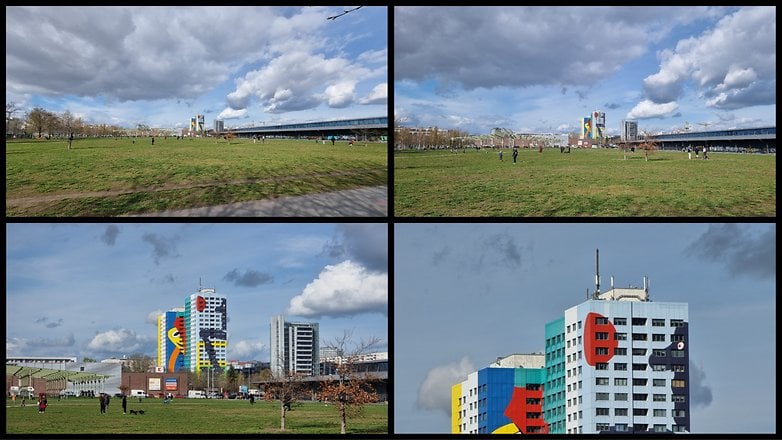
In addition to the varied optical focal lengths, Samsung also trumpets its "space zoom", which allows for 100x magnification. However, the results aren't really usable despite the 108MP main camera and 10x optical zoom capability.
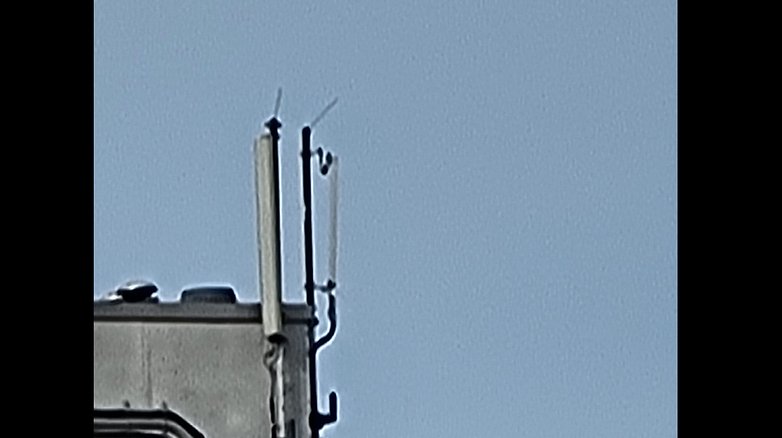
The space zoom is of course awesome if you ever want to take a peek at your neighbour's kitchen table. I had even thought about the possibility of these smartphones opening the door to a whole new way of "peeping" and spying - would you be interested in such an article?
Oppo Find X3 Pro: Optical focal range from 16 to 52mm
When it comes to covering the widest possible zoom range, the Oppo Find X3 Pro simply cannot compete. Not only is the ultra-wide-angle less wide with a 110-degree field of view, the 2x optical zoom only makes it to the 52mm equivalent of 35mm.

Oppo also relies on the support of digital zoom and thus still offers 20x magnification. However, the results aren't really usable either, and are far less impressive than Samsung's space zoom, even when giving it a go. Oppo does have one ace up its sleeve, though, and that is the microscope camera.
This camera produces images with 30x optical magnification, allowing you to take pictures that have never been possible with any other smartphone prior. When it comes to capturing the widest possible variety of subjects, Oppo has a real advantage here. While you can still adjust yourself to compensate for the small degree of difference in terms of zoom, the Galaxy S21 Ultra is simply unable to keep up when it comes to snapping "microscopic" images.
Interim conclusion on focal lengths: One point for the Galaxy S21 Ultra despite missing out on the microscope camera
Still, I have to give the point here to the Galaxy S21 Ultra, simply because the optical focal length range is difficult to beat. Although a well-known trick for amateur photographers exhorts the thought that "feet are the best telephoto lens", the 10x zoom of the S21 Ultra still comes in handy.
I'll get to the final quality of the photos later, by the way. For now, it's just about the range of possible subjects you can capture - be they close up or far away.
2: From HDR to night mode - so much dynamic range in the photos
HDR photography is also the current buzzword when it comes to smartphones today! Those who would rather indulge in "classic photography" may get a stomachache on a regular basis at the mention of HDR, but the handling of very bright and very dark image areas in just one image is important to many photographers who rely on nothing but their smartphones!
Here, both smartphones offer HDR modes that are automatically activated with a tap of the finger or remain permanently enabled if desired. Since there is not much to compare here technically - HDR in both phones is software-based and works by aggregating multiple shots, I'll focus on the results for now.
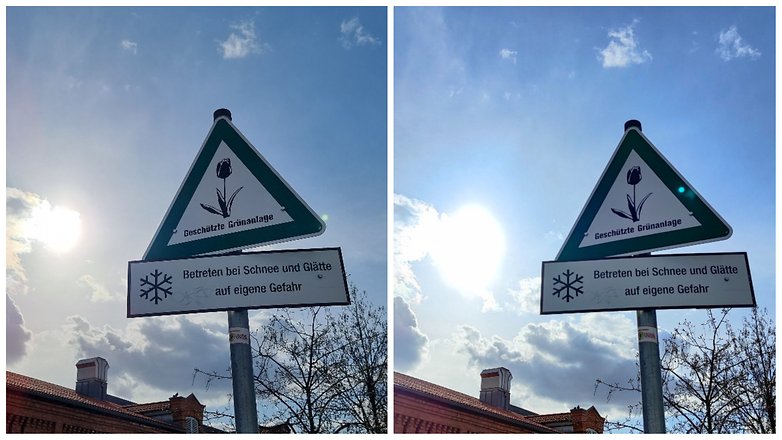
Oppo's 2021 flagship delivers a few crisper colors in a head-to-head comparison and makes for a more dynamic image with HDR enabled. The house at the bottom of the screen is a little bit brighter, as are the rest of the image. Samsung tries to dim down the burnt-out sun a lot, while it appears much brighter on Oppo. Overall, the Find X3 Pro delivers the more impressive HDR image!
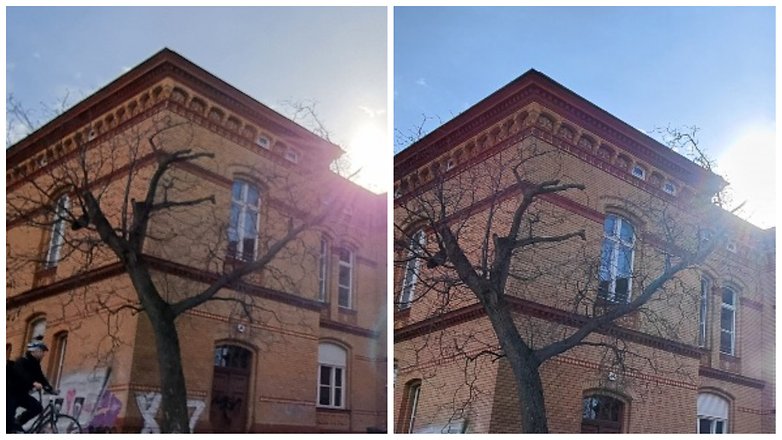
In another HDR image, this time taken with a ultra-wide angle lens! If you head to the gallery with all the comparison photos in full resolution at the end of this article, you'll notice that the Find X3 Pro (right) captures much more detail. At the same time, the image is richer in contrast and once again, Oppo delivers the more vibrant colors.

A prime example in HDR and lens tests: trees with bright sunlight blazing through the branches. Here, the Samsung Galaxy S21 Ultra does much better compared to the previous images, although I particularly like the ends of the branches better on the Find X3 Pro. However, there is heavy lens flare here, which breaks the image a bit.
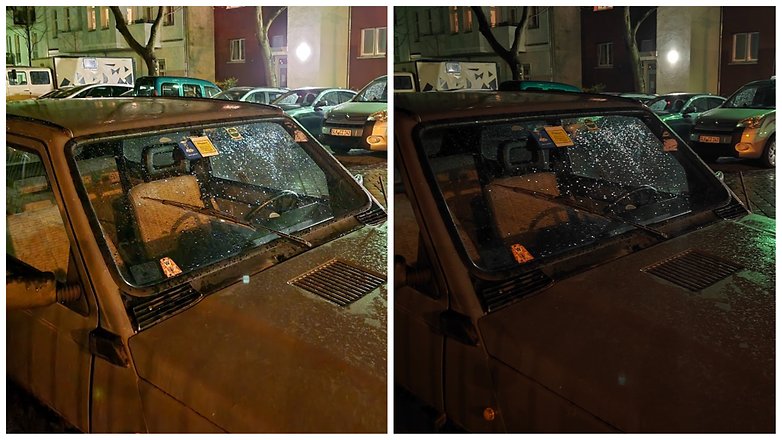
At night, the world looks quite different! Here, Samsung does dabble with the brightness levels a lot more and hence, delivers a slightly artificial-looking image. What's interesting here is that Samsung generally exposes the images longer than Oppo's software solution on the Find X3 Pro. If you tend to concentrate on night mode equally as much as snapping photos during the daytime, then the Galaxy S21 Ultra is the better choice. I personally like the more natural-looking shots, though.
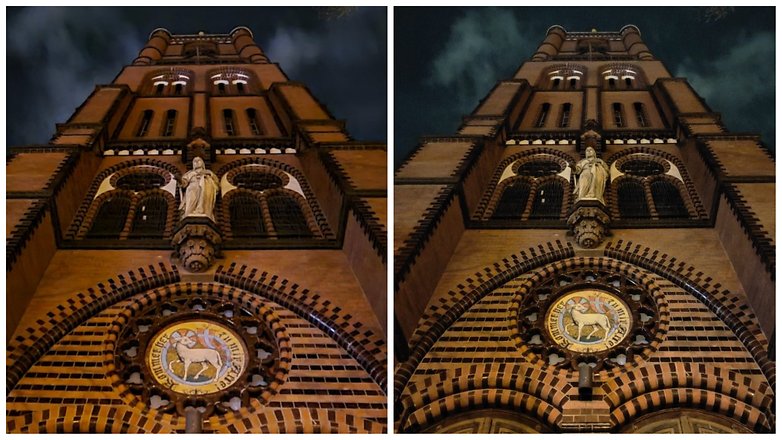
For this church shot, the exposure level is pretty similar on both handsets. Surprisingly, the Galaxy S21 Ultra's camera produces richer colors, which was rather not the case with HDR enabled. Since the image was taken with the ultra-wide cameras on both devices, the level of detail is higher on the Find X3 Pro when you look at the shot up close.

Few things pleased me as much about the Oppo Find X3 Pro in the review as the colors in night mode. Oppo's color management delivers more natural colors in my opinion, even if they are very warm overall. If you look at the prices displayed on the boards that sandwich the door, the contrast level is also a little bit higher. The individual products listed can be distinguished better than on the Galaxy S21 Ultra.
Conclusion: Oppo Find X3 Pro has the higher dynamic range
HDR and night modes are meant to bring details and colors out of scenes that are actually lost on cameras for most users. Dark areas become brighter, while bright areas end up darker - and this is where the Oppo Find X3 Pro comes out on top. This is mainly due to the more effective HDR implementation, which delivers good contrasts even in artificially overexposed areas and produces richer colors overall.
3: From pixelated to sharpness - it's all about the details
With 108-megapixels, Samsung uses a sensor in the Galaxy S21 Ultra that produces incredibly large images. You can theoretically zoom further into the picture via the pinch-to-zoom gesture compared to the 50-megapixels that Oppo offers in the Find X3 Pro. However, both smartphones downscale the resolutions of their sensors and use pixel binning to produce better images at 12 megapixels (Samsung) or around 10 megapixels (Oppo). Let's take a look at the details:
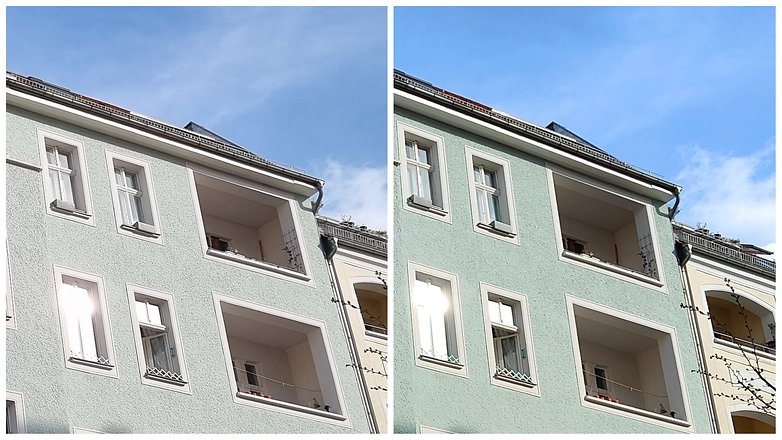
After both phones "binned" your pixels, it's hard to see any significant differences in the degree of detail. Even at this fairly high level of magnification, the wall's texture is clearly visible on both devices, and you can also make out the fine details of the gutters on both smartphones.
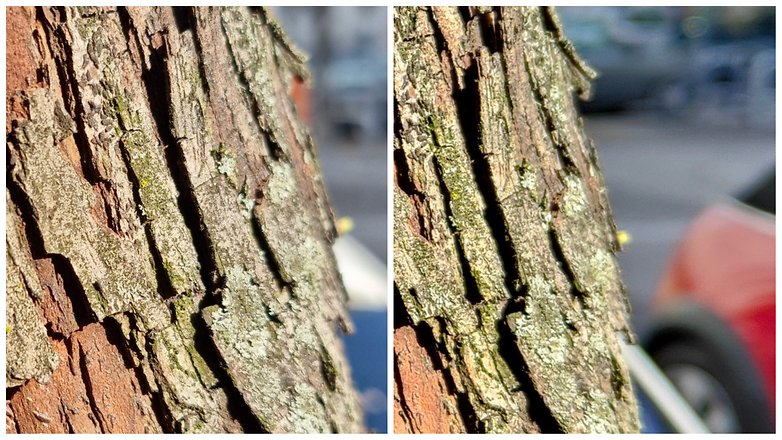
If you decide to capture photos using full resolution on both smartphones, then the sharpness level is obviously higher on the Samsung Galaxy S21 Ultra. Again, in this greatly zoomed-in section, the focus was not 100% identical. You can find the full-resolution image in the photos folder at the end of this article.

At ultra-wide angle, the Samsung Galaxy S21 Ultra cuts a surprisingly good performance! Because although the sensor's resolution is lower than the Oppo Find X3 Pro, and the level of detail is quite comparable. However, the Oppo's resolution is "only" 10 megapixels due to pixel-binning. However, the cars in the parking lot and the fonts on the Kaufland building can still be made out slightly better.
Conclusion: Samsung Galaxy S21 Ultra is sharper
The Samsung smartphone simply packs more megapixels when it comes to capturing photos with the main camera. However, that doesn't mean every picture is directly sharper. Here, I would like to once again point out that the HDR comparison involving the house sees the Find X3 Pro deliver the sharper image.
Still, this round goes to the Galaxy S21 Ultra for delivering a sharp image even when taken at ultra-wide angle, which is where it is a technically inferior shot. With the addition of laser autofocus, it also did a better job of focusing on the tree. A fact that should not be underestimated at all when taking snapshots on-the-fly!
4: From ugly to beautiful - portrait mode and selfies
Let us now move quickly to selfies and portrait mode! In a press call, a younger colleague once explicitly asked about selfie cams, since the young target group uses them so regularly. Fine, I'll use my coronavirus hairdo as a test!
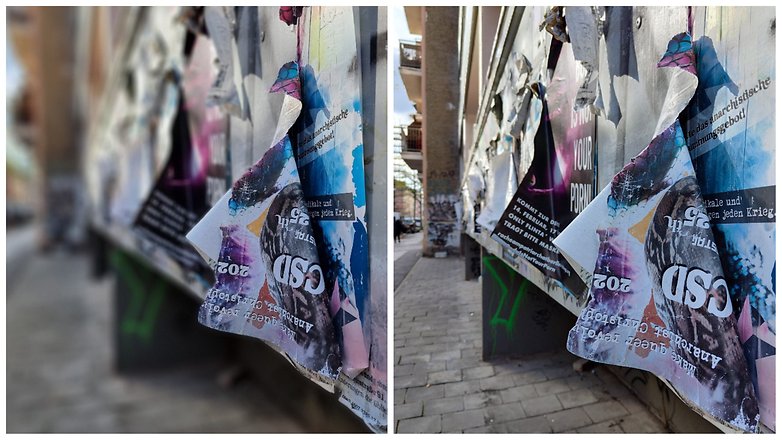
That's right, I ripped off a billboard! Jokes aside, Oppo's portrait mode has a bit of trouble capturing non-live subjects in portrait mode. Samsung does a far better job of this and provides a significant bokeh effect. That was just an introduction though, as I found it to be quite interesting the deeper I dived.

With a face in the frame, Oppo's portrait mode fares much better. On both smartphones, I really like that the focus gradient isn't too abrupt. The ends of that messy hairstyle don't completely blur out in the bokeh, but transitions slightly on both handsets. Personally, I like the skin tone and contrasts better on the Samsung Galaxy S21 Ultra. However, there aren't really any big differences here.
Conclusion: Galaxy S21 Ultra wins by a whisker.
If it wasn't for shooting objects with this mode, I would have settled for a draw here. But the fact that Oppo doesn't create any blur on the billboard even with the bokeh slider turned all the way up was a thorn in my side. Samsung does that better and is at least on par with the Find X3 Pro when it comes to selfies.
Overall conclusion: Samsung Galaxy S21 Ultra still pips the Find X3 Pro
And now, to declare the best student in the class, and thus the winner of a brand new and most importantly, brakeless fixie bike, I would like to announce the winner as the Samsung Galaxy S21 Ultra! If you take a close look at some shots, the smartphone is ahead in most of my categories and even the cool microscope camera of the Oppo Find X3 Pro could not do much to turn the tide in its favour
As you shared in my special article about the Oppo microscope camera, this feature is a nice gimmick to have and will struggle to hold its own in the long run as much as additional sharpness when zooming in. Still, I'd rather go on a photo tour with the Find X3 Pro in my pocket, as I like the colours immensely and I hardly ever take any telephoto photos in the first place. Moreover, one advantage that the Find X3 Pro has is the fact that its photos can be captured using the 10-bit colour pathway, something which has not been taken into consideration in this shootout.
This isn't due to any bias, but simply because HEIC files aren't easily accessed on the Internet or even on a computer. Most users will only be able to enjoy them on their smartphones, so they were less relevant in this comparison. But you can still read more about this in our review of the Find X3 Pro!
Here are all the full-resolution photos from this article
In this camera review comparison, I tried to focus on the basic aspects and have now typed close to 3,000 words. If you are interested in more sample photos, I've uploaded them all to a Google Drive folder for you to look through in full resolution. Beyond that, I'm eager for your feedback and would love to know if you find photo comparisons exciting in the future!

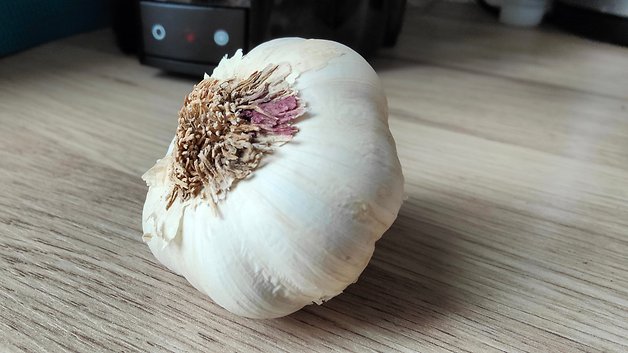
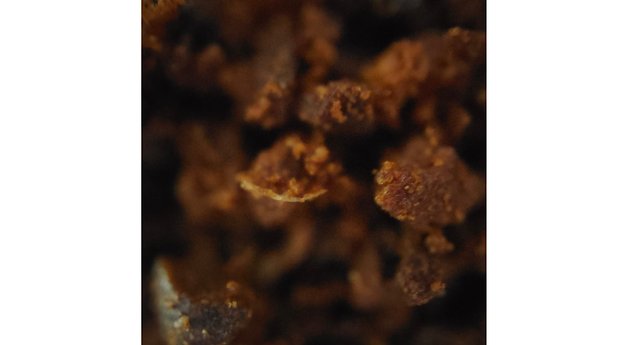
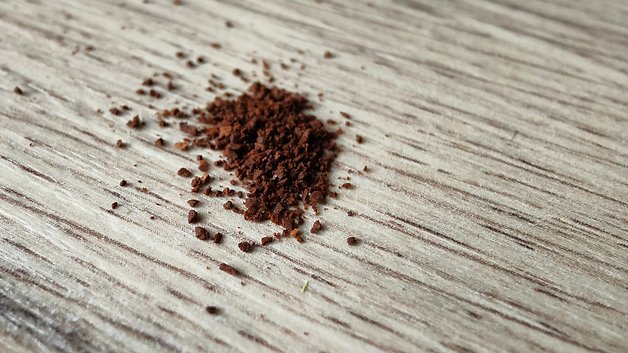
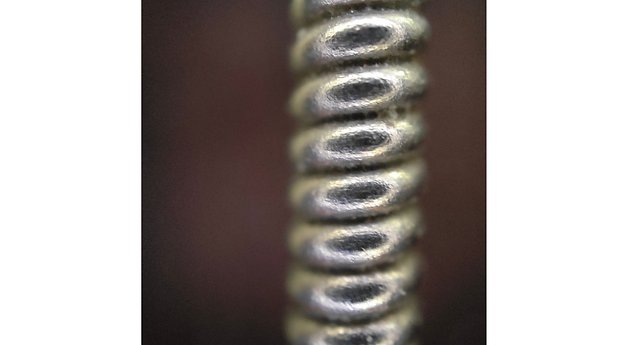
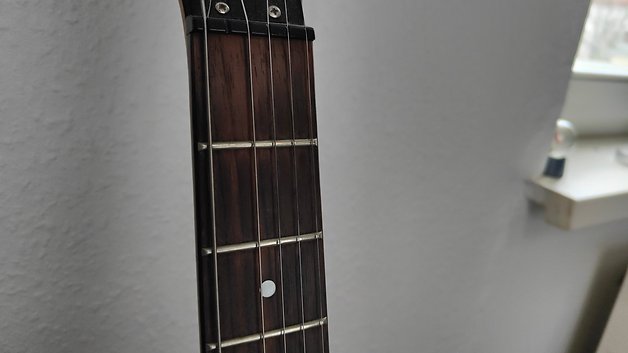
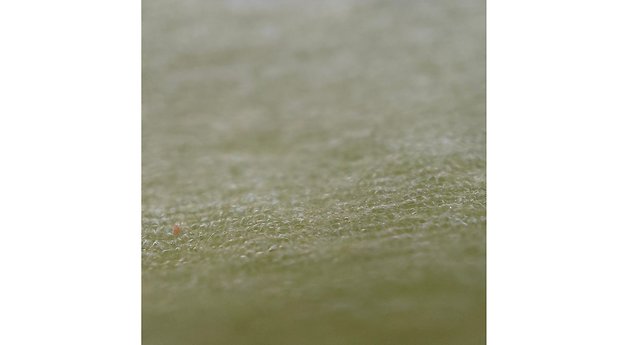
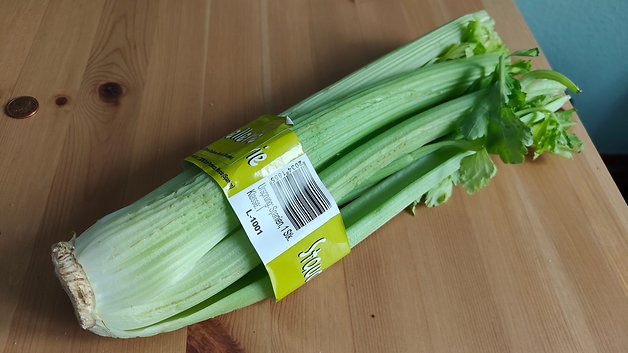
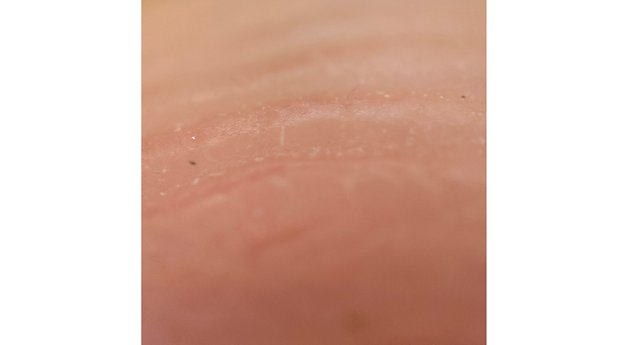
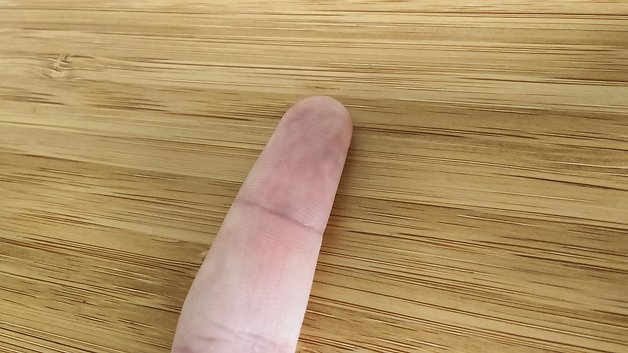
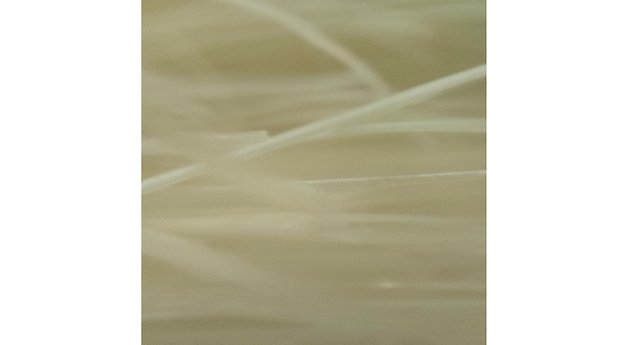
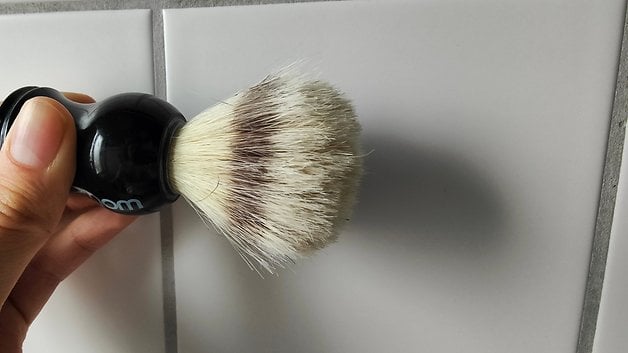
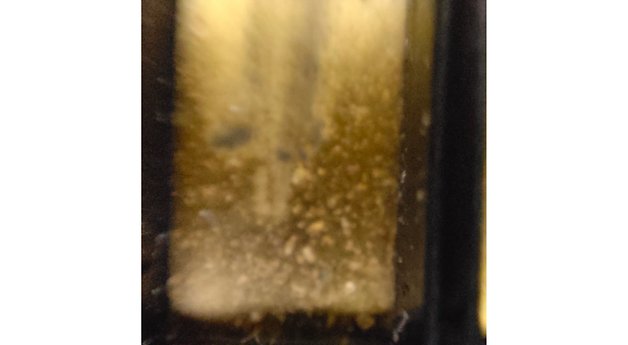
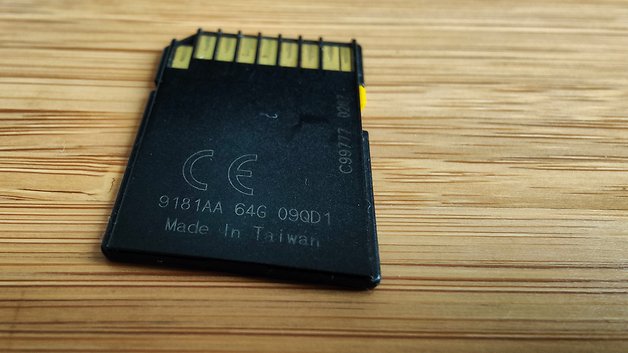

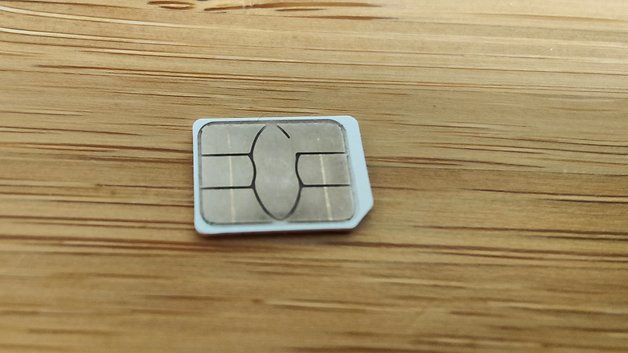

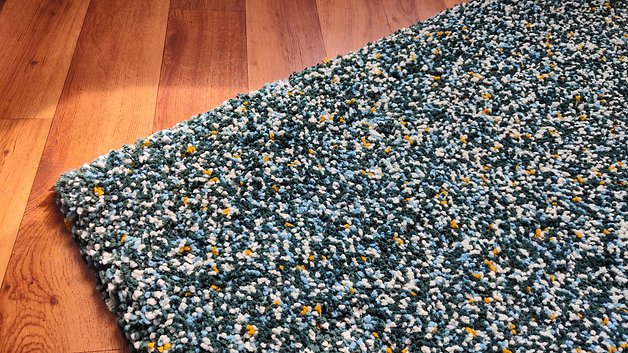
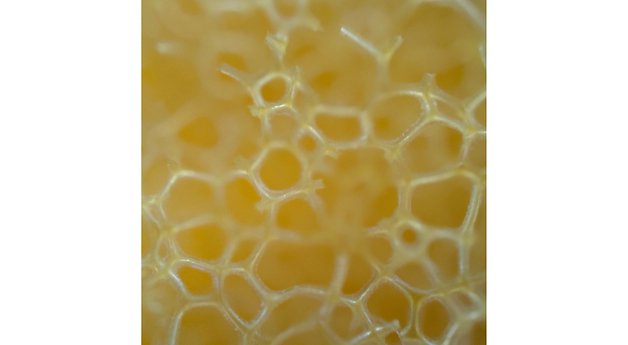
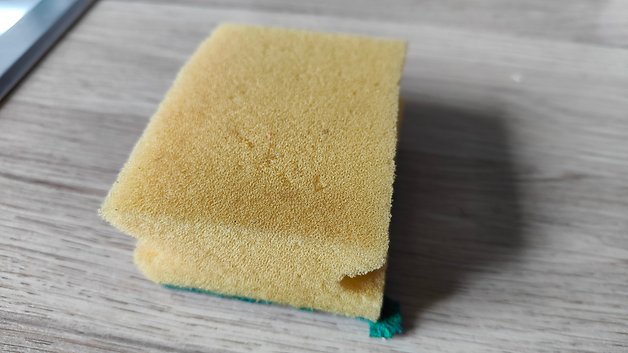
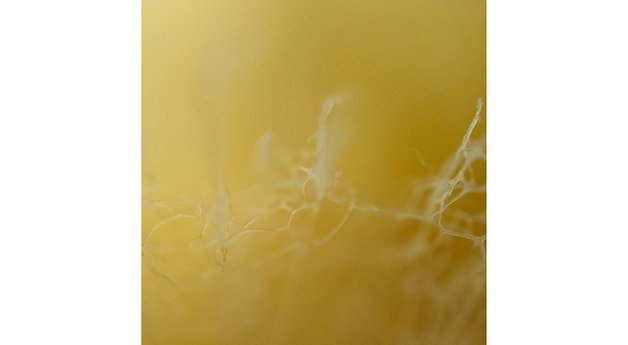
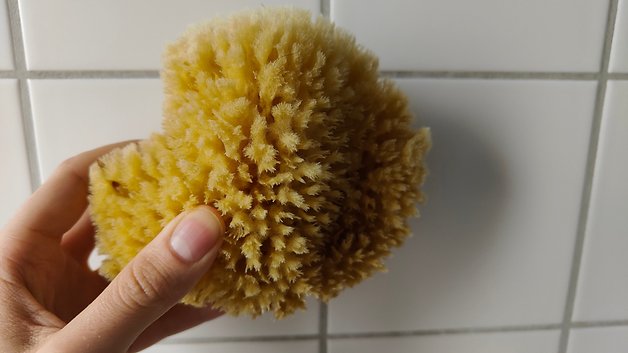
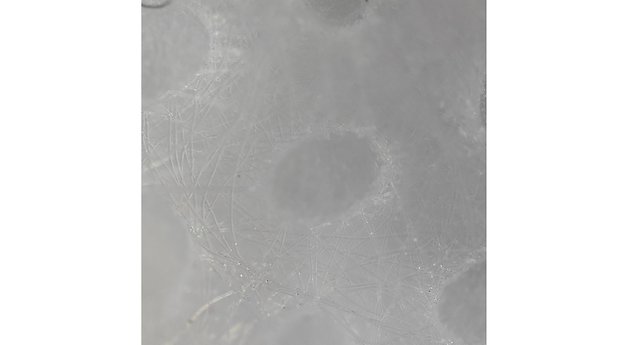
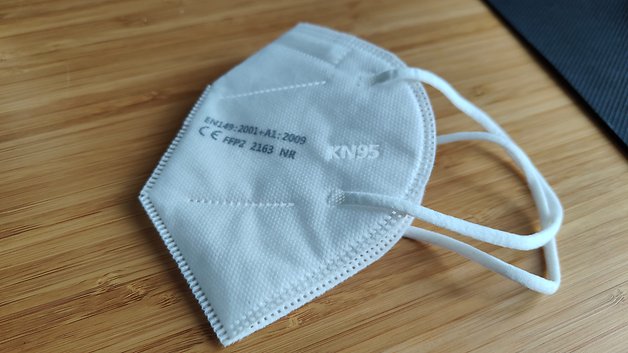






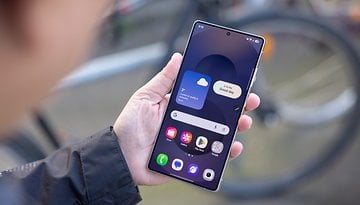

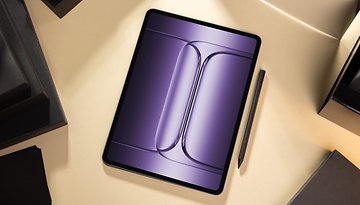
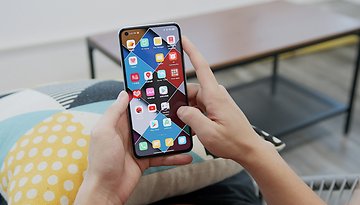

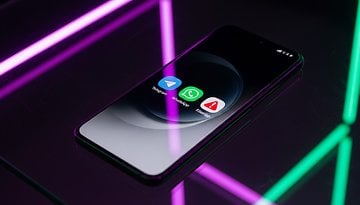
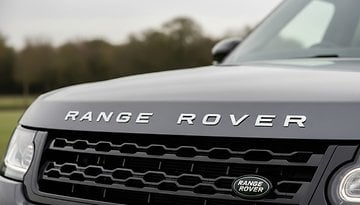

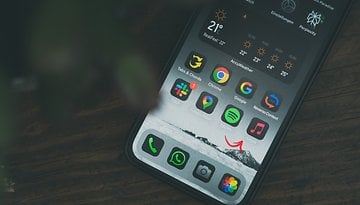

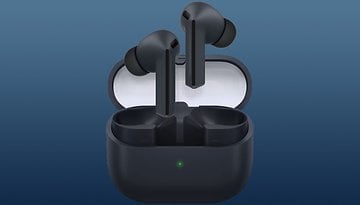



Galaxy S21 Ultra is best i am user of this handset. No1 and best for you and me.
Thank you for sharing about camera shootout: Galaxy S21 Ultra vs.
Oppo won some rounds, but the Samsung was better overall.